How to grow plums: tips on planting, growing and caring for plum trees
Discover how to grow plums and you'll get to enjoy a plentiful supply of delicious fruit from these easy-to-grow trees
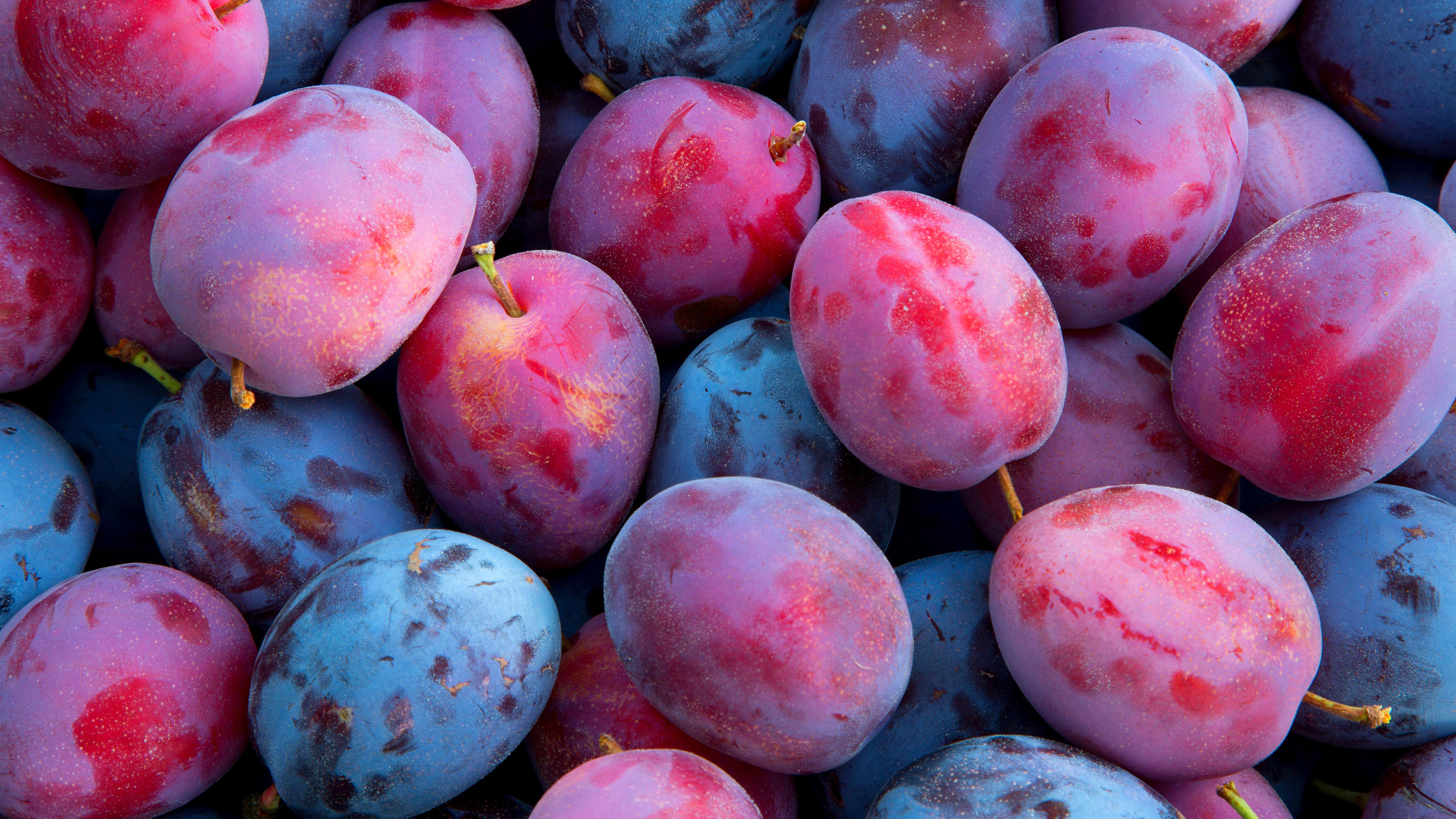

Discover how to grow plums and you'll have a fruit that delivers masses of crops. Whether you’re after a sumptuous, tangy treat you can eat straight from the tree, or delicious flesh that can be cooked down for preserves, jams, pies, jellies and even wines, plums are the natural choice.
As an entry point for a fruit tree beginner, the plum is the perfect choice for your kitchen garden ideas too. It’s easy-going, unfussy and charmingly versatile. Whatever your location, soil type or space, there’s a variety to suit. The only requirements are sunshine and shelter.
The beauty of growing plums is that many popular and modern breeds are self-fertile, so you only need one to fill your kitchen garden with fruit. On top of all this, this family of fruits is highly ornamental, and many produce breathtaking spring blossoms.
Learn how to grow plums and enjoy a delicious harvest of fruit
Once you know how to grow plums, the ratio of effort to reward is delightfully stacked in your favor. 'By growing one of these trees, you’ll not only be keeping your household stocked up but those along your entire street!' says Amateur Gardening's fruit and veg expert Lucy Chamberlain. ‘Plums are notoriously high yielding.’
To help you get started, we've put together all the expert advice you'll need to cultivate and harvest your own crop of plums.
When to plant plum trees
As a general rule, plum trees are best planted during the dormant season. This means you have a window from winter to early spring (November to early March in the UK and US), when your planted trees have the greatest chance of success.
Planting while dormant allows them time to establish and get settled in the ground before things kick back into life. Some gardening experts believe that the best time to plant is in early fall (around October), as the soil is likely to be moist but also still has some of the warmth of late summer.
However, there is another aspect to planting that impacts when you plant your plum tree. Are you planting a container-grown tree, or one that was supplied ‘bare root’ (with no soil around the roots)?
The advantage of a container-grown tree is that you can plant the tree at any time (although they will settle in much better if planted from winter to early spring).
If you're planting bare root trees, they need to be planted straight away (and tend to only be available to buy between November and March while dormant). However, they often establish better than their container-grown equivalents – especially if the ground has been pre-prepared with organic material so the soil is crumbly. It’s a good idea to prepare the soil a month before planting your plum tree.
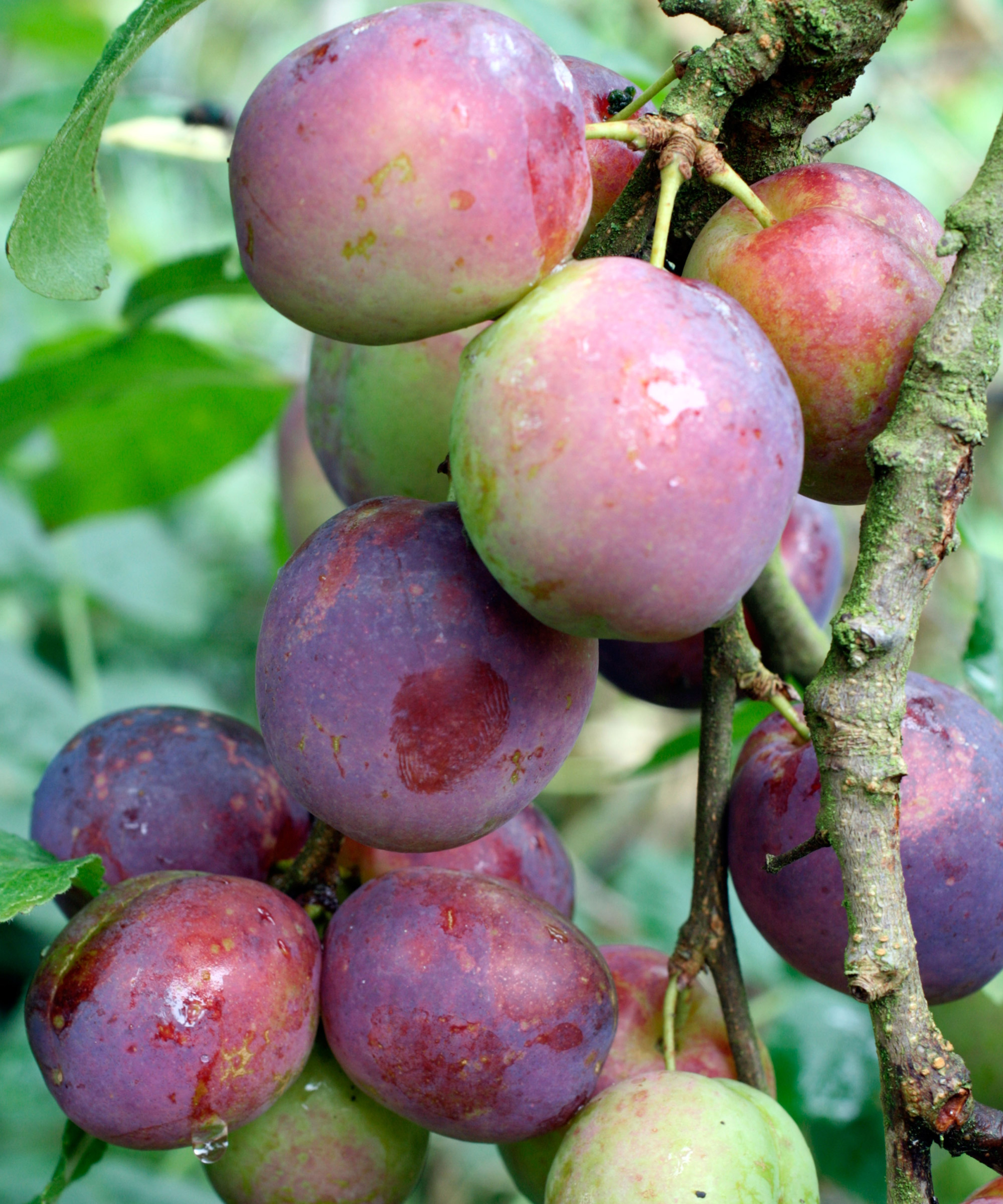
How to grow plums: getting started
Learning how to grow plums boils down to a few simple decisions: settling on the right spot, deciding what kind of tree shape you want, and picking the right single self-pollinating variety (or mix of trees).
Plum trees like shelter and sunshine (at least eight hours a day) so they can set fruit and crop well. They can thrive in a range of soils, though they prefer moist, well-drained, loamy conditions (with a pH of 5.5-6.5). Our guide to soil types can help you identify yours and adjust before planting.
The type of training method you plan on using with your tree also has a bearing on its success in your garden. Consider this in conjunction with the plum variety and tree rootstock, as well as the space in your garden.
There are a few training types to choose from:
- Bush type A conventional ‘tree’ shape.
- Fan A training method that works well against a wall or garden fence so your plum has protection from chills.
- Cordon training This involves focused growth around a single stem.
- Pyramid training is like a bush, but tends to be smaller.
- Step-overs Low-growing, horizontally trained trees, great for developing sweeter fruits that get more sunlight, depending on the variety and rootstock.
Before planting, it’s fine to add some organic matter, but don’t add more if there is some already in the ground. Too much, and you will wind up with too much tree growth at the expense of fruit growth.
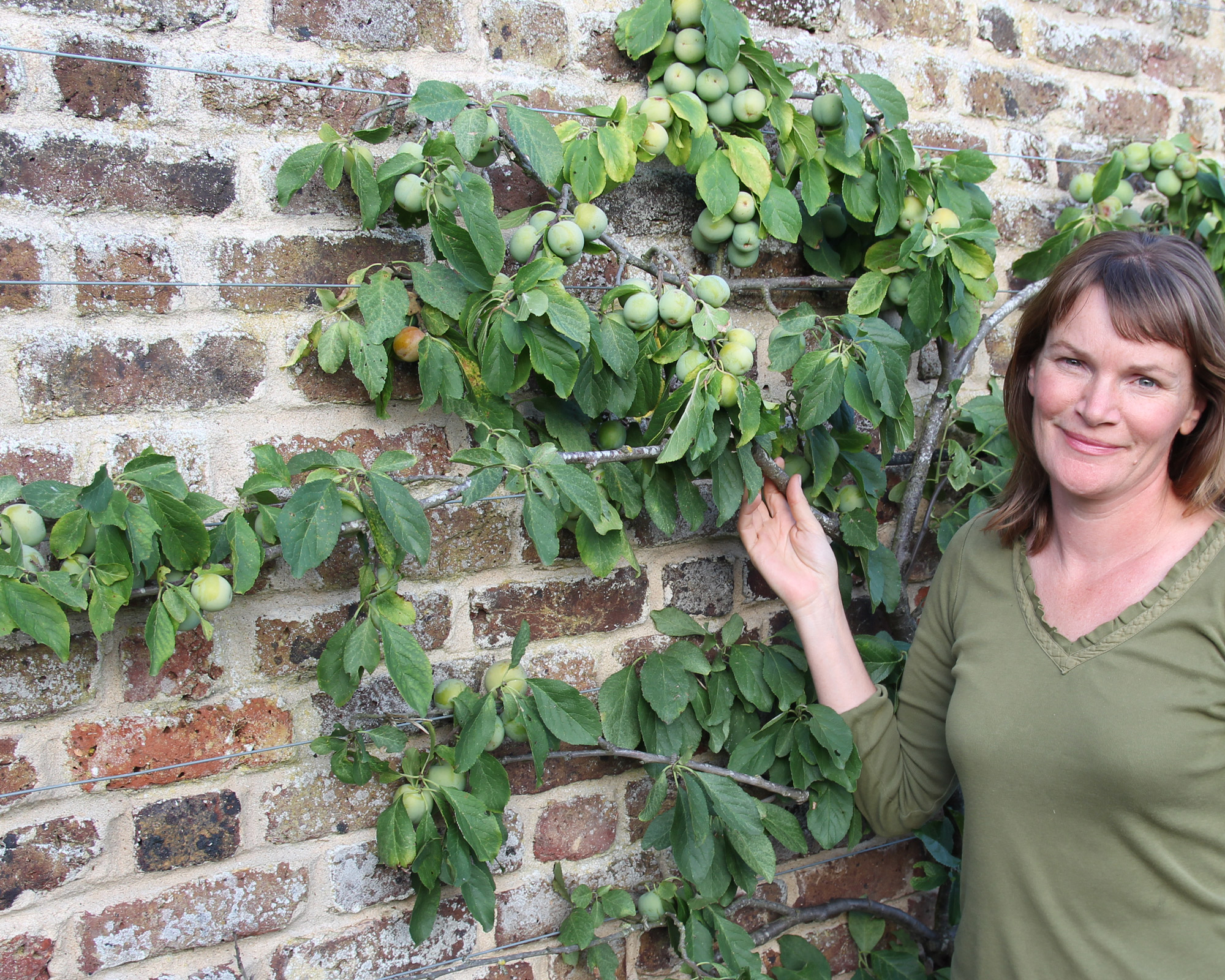
How to plant a plum tree
Once you have chosen your variety, site and training method, planting the tree is straightforward. Just make the right size and shape of planting hole, check the roots, hydrate well and make sure the young tree has the right support until it is established.
Step 1: prep the tree before planting
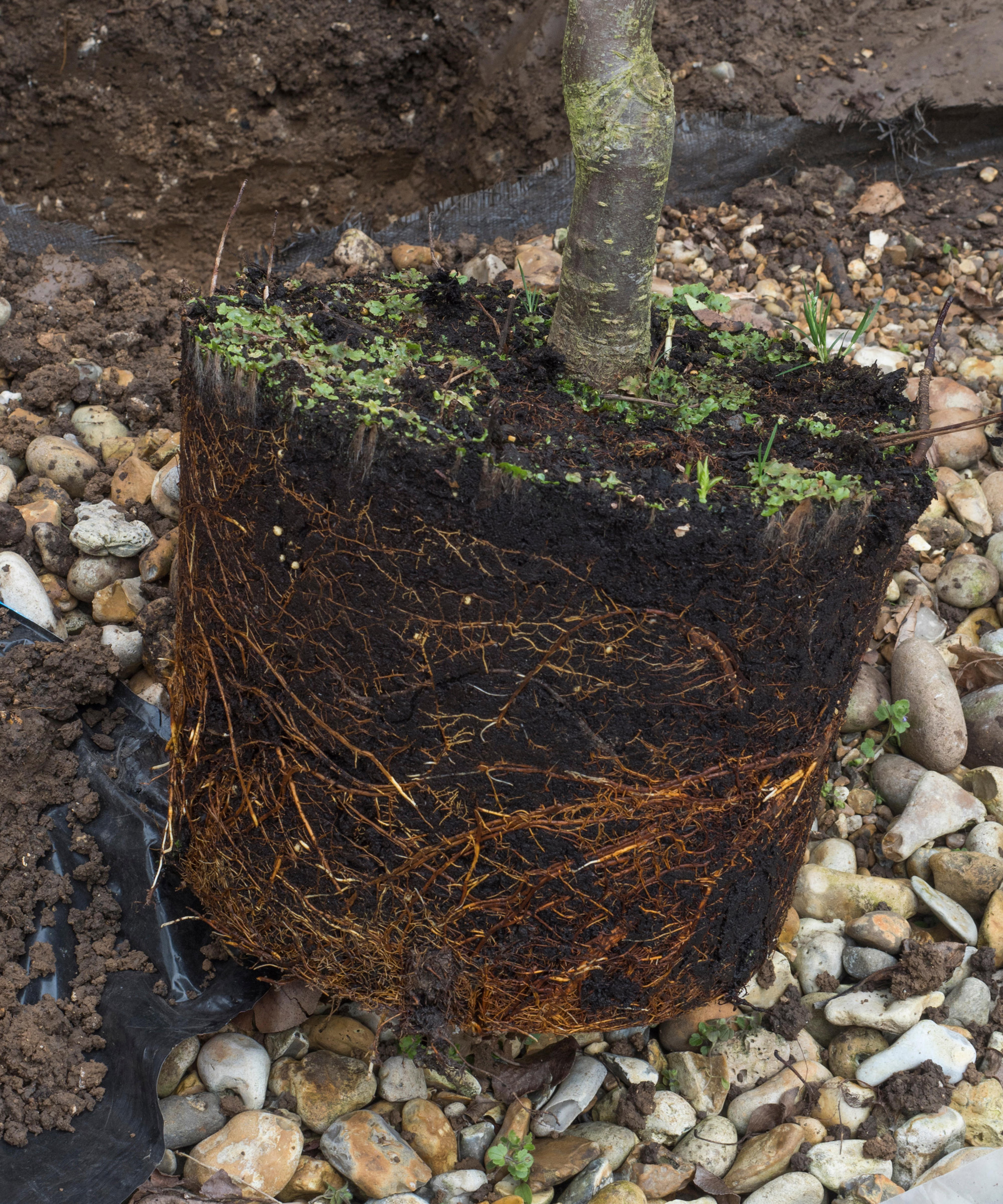
Once you have prepped the planting area with high-quality compost, you need to prep the tree before planting. To prepare a container-grown tree, remove from the pot. Lay the root ball on its side and use shears to trim any tightly coiled roots. Untangle the edges without damaging any. You also need to soak the root ball in water for an hour before planting.
Step 2: dig a hole for the tree

Make sure the planting hole is twice as wide and as deep as the root ball of the tree. A good guide is 12in (30cm) deep and 2ft (60cm) wide. Check you can place the tree in the hole and cover the roots with soil up to ground level.
Add some organic material or well-rotted compost to the base of the hole. Dig in, so the soil is crumbly. This will help the tree hold moisture as things warm up.
Our guide to composting has lots of useful tips on how to make your own compost at home.
Step 3: place the tree in the ground
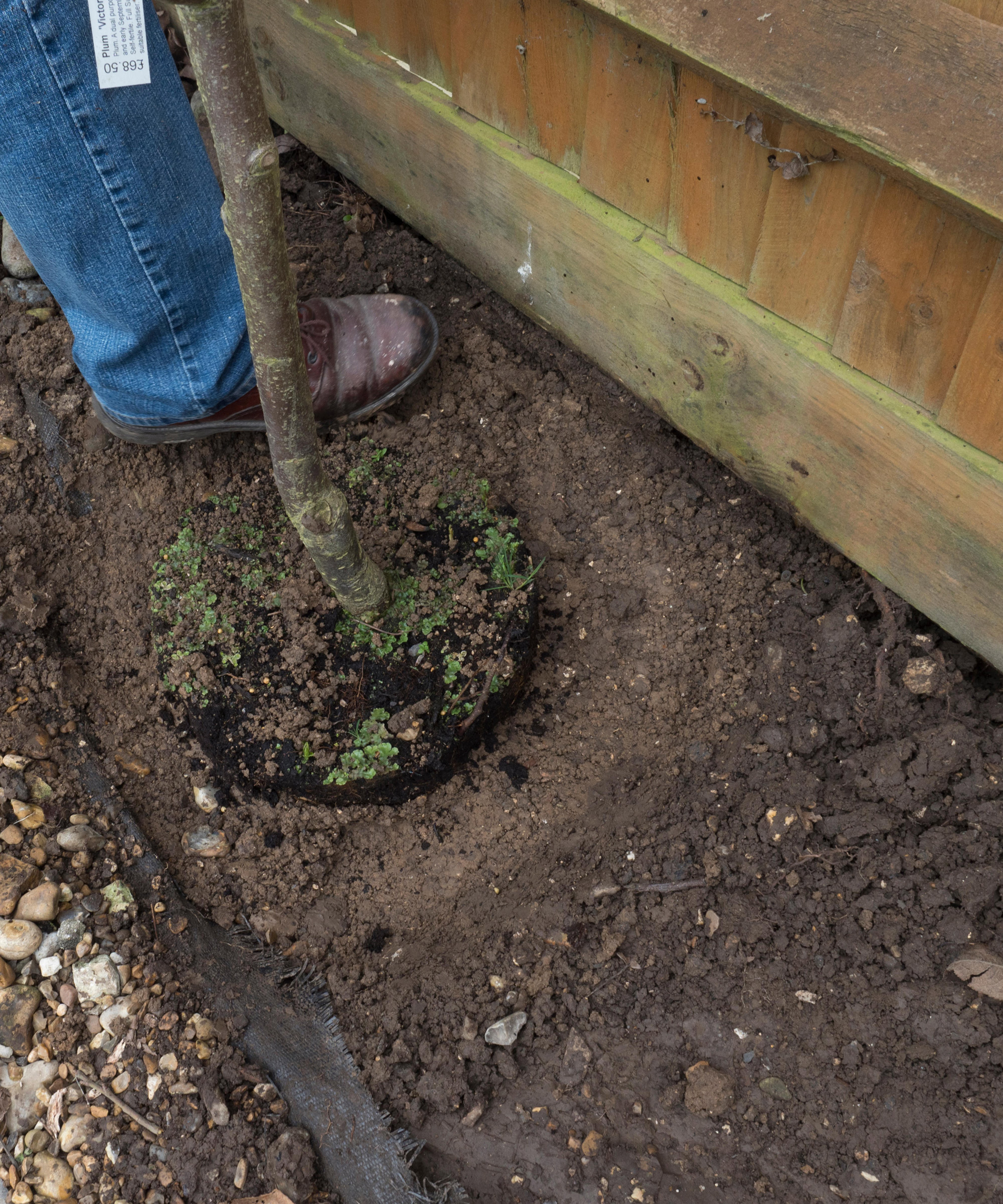
Place the tree in the hole. Fill in with a mixture of soil and compost, and add a little more organic material as desired. Make sure the tree is planted at the same depth it was in the pot (or, if bare rooted, use the soil mark on the trunk as a guide). Also check the roots are well covered and that there are no air pockets.
Firm down, then water well to help the soil settle around the roots. Keep well watered for the first few weeks; for tips on watering plants, follow our guide.
Step 4: support the plum tree after planting
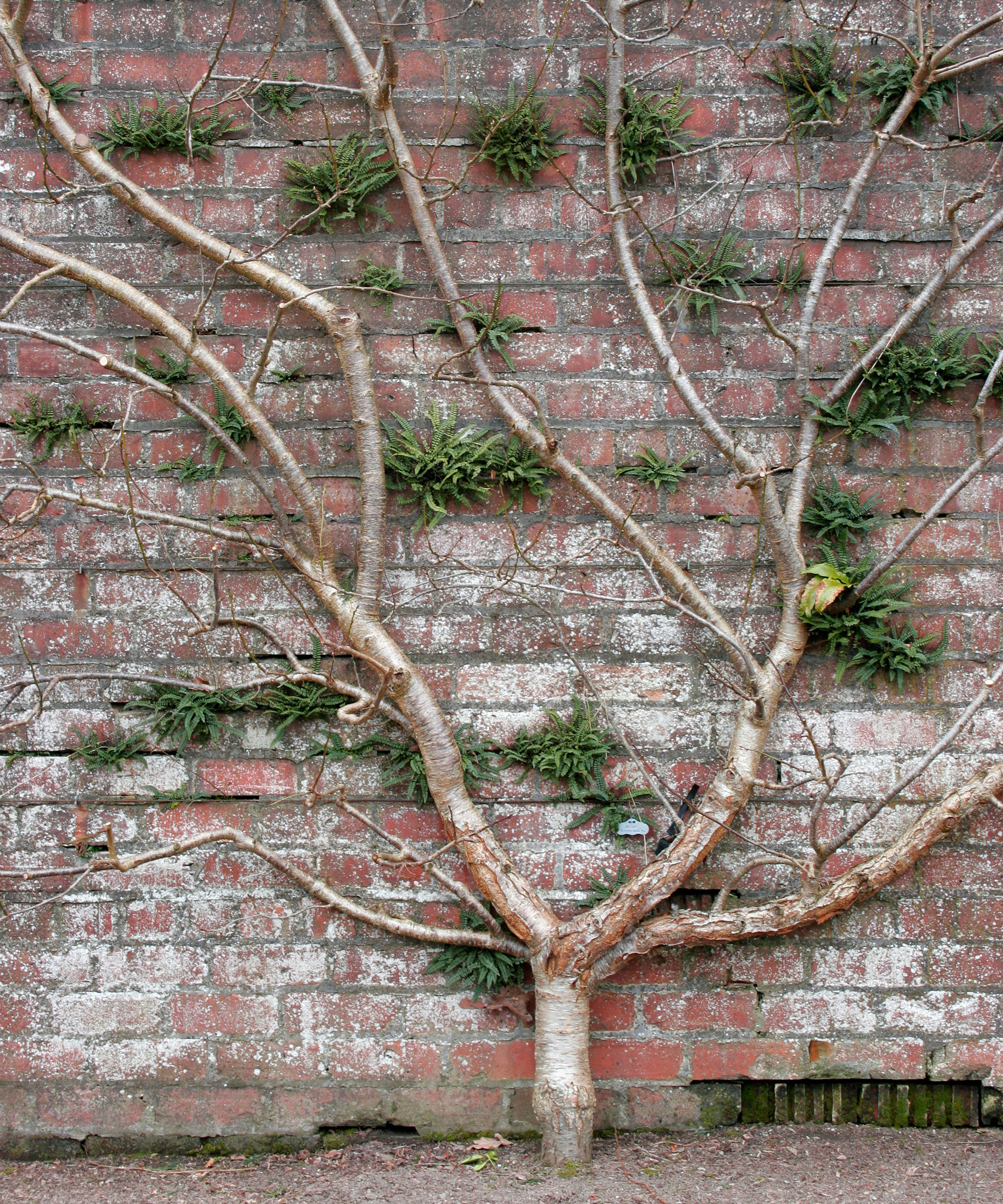
Young plum trees will need some support for the first few years after planting. If your tree is going to be grown as a fan against a garden wall or fence, you already have this covered. Otherwise, a rigid stake can help give your tree stability. Make sure this is 6in (15cm) from the main stem. Secure with plastic ties at 1ft (30cm) intervals. Keep checking and adjusting these ties as your plum tree grows.
Can you grow a plum tree in a pot?
You can grow plum trees as part of your container gardening ideas, although you will need a large planter that's 16-20in (40-50cm) across. Just make sure you pick a compact variety and rootstock suitable for a large container.
Half-barrels and large terracotta pots will provide the stability and depth required to give your tree the best start. Opt for a soil-based compost such as John Innes No3, which will help prevent drying out in hot weather.
Our guide to the best fruit trees to grow in pots has lots more suggestions for varieties that are ideally suited to container growing.
Where to grow plums
Plum trees need warmth and protection from exposure. It is important to keep the tree safe from frosts and biting winds. Protection from wind assists with pollination, helping fruit set and crop well.
In the northern hemipshere, make sure the spot you choose is south- or west-facing, somewhere like a wall or fence. If you intend to plant more than one, make sure they are well spaced; 25ft (7m) apart if standards or 15ft (4.5m) if dwarf trees.
Obviously, the final size of your tree should factor into your decision as you learn how to grow plums. Some varieties reach 16ft (5m), although obviously this is dependent on whether your tree is using a dwarfing rootstock. It also depends on whether you will be using a restricted training method such as a fan or cordon, allowing for growth in far smaller spaces.
Word to the wise: you may find it best not to grow plums near other fruit trees, which will compete for the moisture they crave.

How to take care of a plum tree
As long as your plum tree is properly supported as it develops (with a stake or against a wall), its needs are fairly basic. Follow this simple advice for the best chance of success.
- Water your plum tree heavily during the first growing season, regularly when fruiting, and always during dry spells. If you're growing your plum tree in a garden planter, regular watering is needed so the compost does not dry out.
- Keep an eye on the base of the tree and make sure that a radius of at least 3ft (1m) is kept weed-free. Mulching with compost or well-rotted manure combats weed growth, as well as keeping the ground moist. Take care to keep the mulch away from the trunk. You can add an organic fertilizer (like fish, blood and bone) before laying your mulch in spring. A further mulch in autumn (including shredded bark) will keep the soil warmer and well-nourished as the weather cools.
- Thinning your plum tree will ensure that the tree’s energies are directed towards developing only the best fruits. It also helps to prevent bent or broken branches due to overloading – and allows good air flow and sunlight to access all areas. To do this, remove the surplus when fruits are forming in June-July. Leave one fruit every 2-3in (5-8cm), or a pair every 6in (15cm). If you’re feeling more confident, rub off half the fruit buds in spring for the biggest size increase in the remaining fruits.
- Prop up loaded branches as fruits reach maximum density. You don’t want the branch to snap after patiently waiting for your plums for so long! To prevent branches snapping, give the more laden branches a boost with a Y-shaped support.
- Consider trying companion planting to help give your plums a lift too. Chive and dill are great for pollinators like bees and hoverflies, as is lavender (you can find out how to grow lavender with our guide). Comfrey is good for adding calcium, phosphorus, and potassium, all beneficial to plums. Meanwhile, planting nasturtiums can be a great natural method for how to get rid of aphids.

How to tackle key problems with plums
Plums are highly desirable to all manner of pests. This includes the usual offenders, such as birds and wasps (our guide on how to get rid of wasps explains how to tackle this common foe). Then there are specific insect pests like the larvae of plum fruit moths.
Alongside animal pests, you must stay vigilant for diseases such as silver leaf and bacterial canker. Certain plum breeds may have a measure of disease resistance, but others are vulnerable. Knowledge is power, so wise up to these five key plum afflictions:
- Plum moth The plum moth (and plum sawfly) can wreak havoc. Plum moth eggs laid on branches in summer hatch into pink caterpillars that tunnel into young fruits. Spray with pyrethroid-based pesticides once fruitlets appear, or hang pheromone traps in trees in May.
- Plum rust Caused by the fungus Tranzschelia discolor, this one may be a case of live and let live. Although the orange spotting on the leaves can look alarming, the disease occurs quite late in the season and the fruits themselves are unaffected, says expert Lucy Chamberlain.
- Pocket plum This fungal infection (Taphrina pruni) causes plums and damsons to develop abnormally and without stones in midsummer. You might also see a white bloom before fruit shrivels. The best action is to remove all infected branches and fruit before spores are produced.
- Silver leaf This is a fungus causing a silvering of the leaves, but it is readily controlled by cultural means. The airborne spores are much more prevalent in late autumn and throughout winter. These enter via pruning wounds, so only do this during summer. Disinfect cutting tools, such as your best secateurs, regularly.
- Bacterial canker Appearing as sunken patches of dead bark and small holes in leaves, this disease develops in mid-spring. If unchecked, the branch can die rapidly. Minimize risk by pruning in July and August. ‘Marjorie’s Seedling’ and ‘Warwickshire Drooper’ have some resistance.
To keep on top of insect pests, why not encourage their predators by including some wildlife garden ideas in your plot? Natural visitors like ladybirds and hoverflies will target ‘plum predators’ such as aphids. Earwigs also help control numbers, so keep pots (stuffed with paper) dotted around the plot to encourage them.
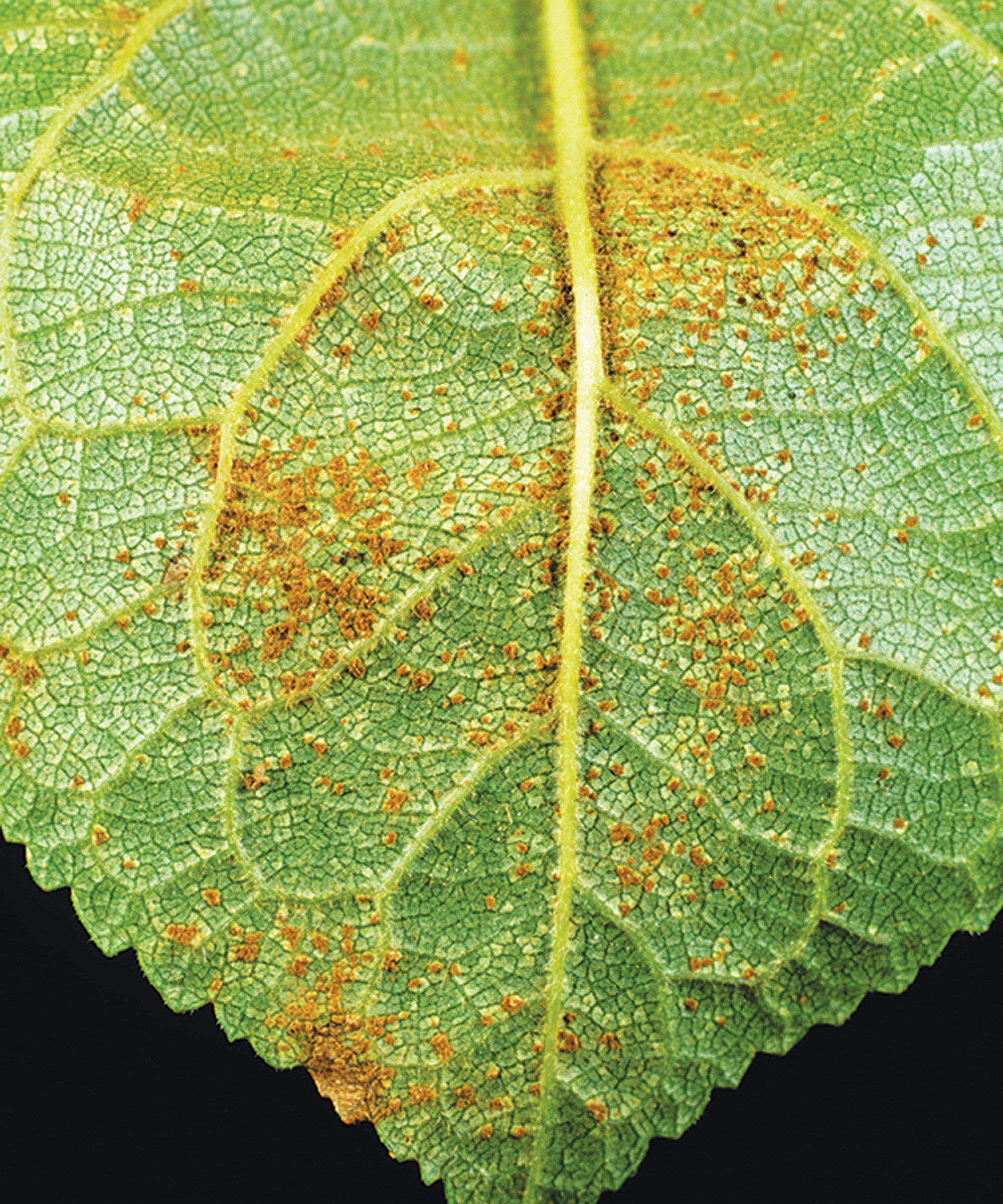
When to harvest plums
The first thing to point out is that you shouldn't expect fruit the same year you start your tree off. But take heart – although it could take three or four years from planting for the first crops to appear, you will be handsomely rewarded for your patience.
Allowing for the correct care and thinning, these masses of fruit should start filling out and coloring up in August and September, but it's best to leave your plums on the tree as long as you can to fully ripen.
A gentle squeeze is usually all it takes to know when to pick your plums. Apply gentle pressure to each fruit (but not enough to bruise it). If it feels soft to the touch, lift, twist and pull. Ripe plums should come away from the tree easily. Take care to routinely sweep each branch when gathering the fruits. You will need to do this several times.
Dessert varieties are best eaten fresh or stored in the fridge for up to 10 days. Culinary varieties can, of course, be turned into preserves and used in cakes and pies. You can also freeze your surplus plums – but remember to destone them first. ‘Some varieties (like ‘Opal’) are termed ‘freestone’, which means the stone parts easily from the flesh,’ says Lucy Chamberlain. However there are also ‘clingstones’ such as ‘Marjorie’s Seedling’, which are more fiddly to de-stone.'
Where to buy plum trees
You can buy plums as bare root trees or container trees. Bare root trees need to be planted as soon as possible. Look for well-balanced branches and a strong central leader for training. It’s also worth contacting a fruit tree specialist for buying advice.
Use our quicklinks to head straight to leading suppliers.
Where to buy plum trees in the UK:
- Shop plum trees at Amazon
- Shop plum trees at Ashridge Trees
- Shop plum trees at Chris Bowers
- Shop plum trees as Crocus
- Shop plum trees at Dobies
- Shop plum trees at Orange Pippins Trees
- Shop plum trees at Primrose
- Shop plum trees at Suttons
- Shop plum trees at Thompson & Morgan
- Shop plum trees at Waitrose Garden
- Shop plum trees at You Garden
Where to buy plum trees in the US:
How important is plum rootstock?
If you are buying a plum tree to plant, the size of your plot is a key consideration. Certain varieties are bred to be more compact, which is certainly helpful – but this alone is not enough. This is where rootstocks come in incredibly handy. Essentially, all plums you buy are grafted onto a ‘root’ tree, which is used to determine the ultimate growth of the variety concerned. Good news if you’re looking to maximise your fruiting potential in a small garden.
The rootstock helps to control the vigour of the variety. Basically, you can determine the overall size even if you have limited space or want a plum type that is naturally dominant. This also helps to make it possible to grow certain plums, gages and damsons in pots as part of your patio gardening ideas. Rootstocks can also be used on other stone fruit trees to help control the size.
Rootstocks are important for training, too. The best rootstocks for plums are Pixy and Saint Julien A. Pixy is great for pyramids and cordons as it is a semi-dwarfing rootstock, producing a tree 10-13ft (3-4m) high. Meanwhile, St Julien A is great for bushes and fans, up to 16ft (5m). And if you are growing in containers, use either of these dwarfing rootstocks to get the most from plums such as ‘Blue Tit’, ‘Opal’ and ‘Victoria'.

Can you grow plums from seeds?
While it is easy to learn how to grow plums by planting a tree, you may be tempted to take it one step further and try growing one from the stone pit of a plum. So can you? The short answer is: yes. However, the tree will take longer to develop, and it may or may not bear fruit. And even if it does, the plums won’t grow ‘true’, which means they will not be exactly the same as the parent fruit you originally enjoyed.
Many of the trees you buy from specialist nurseries or online suppliers have been carefully bred and grafted onto rootstocks to take the hard work out of growing your own plums. These grafts are deliberately made to create fruits that are ‘true’ to the parent varieties. So while it might be fun to see what happens by growing plums from seeds, bear in mind that you’ll be spending more time developing something that will take longer to fruit and might not bring you a tasty treat at the end of it.
Still, if that hasn’t put you off, here’s how to grow your own plum plants from seed:
- Wash the plum stone in lukewarm water to remove any residual pulp. Then wrap in a moist paper towel inside a plastic bag and place in the fridge. The seed needs to be chilled for six-eight weeks to germinate.
- Once the pit has sprouted, place it in a container with well-draining soil (a good mix is one part potting mix to one part vermiculite). Place the stone about 2in (5cm) deep. Place in a cool, bright spot and keep moist.
- When the risk of frost has passed, find a spot outside with a minimum of eight hours of direct sunlight. Dig a hole 12in (30cm) deep, plant, firm in and water. Mulch and fertilize in spring.
Looking for a fruit that is easy to start from scratch? Our guide on how to grow watermelon shows you how to ‘go big’ from a tiny seed.

Do plum trees fruit every year?
Once you know how to grow plums, you’ll never want your supply to run out. However, there are a couple of things to bear in mind. First, you won’t get plums in the first year of planting. It generally takes three or four years to start fruiting, and six years to reach its full potential. If you have a smaller dwarfing tree, you might see plums in a couple of years.
This doesn’t mean, however, that you are guaranteed a bumper crop every year. Quite often, gardeners find that their plum trees can produce an abundance of fruit one year – only to seemingly halt production and ‘take a break’ the following year. This is known as ‘biennial bearing’, and it is the tree’s way of replenishing its resources if it got exhausted by a particularly heavy cropping year. So if your plum tree has a quiet year of little or no fruit, don’t panic; it just decided to sit one out.
The same can happen in reverse, where a failure to flower (and fruit) in any particular year can cause the tree to overcompensate the following year by powering into overdrive with masses of flowers (and fruits). That failure to flower tends to be caused by a frost or by prolonged periods of dry soil. You can minimize these risks by making sure your tree gets regular watering, especially in summer, and by covering flowering trees with a tent of horticultural fleece when the temperature drops – this is one of the easiest methods for how to protect plants from frost.
Hopefully then, your plum trees will crop every year to a happy standard – and keep you well stocked up in tangy juicy fruits.
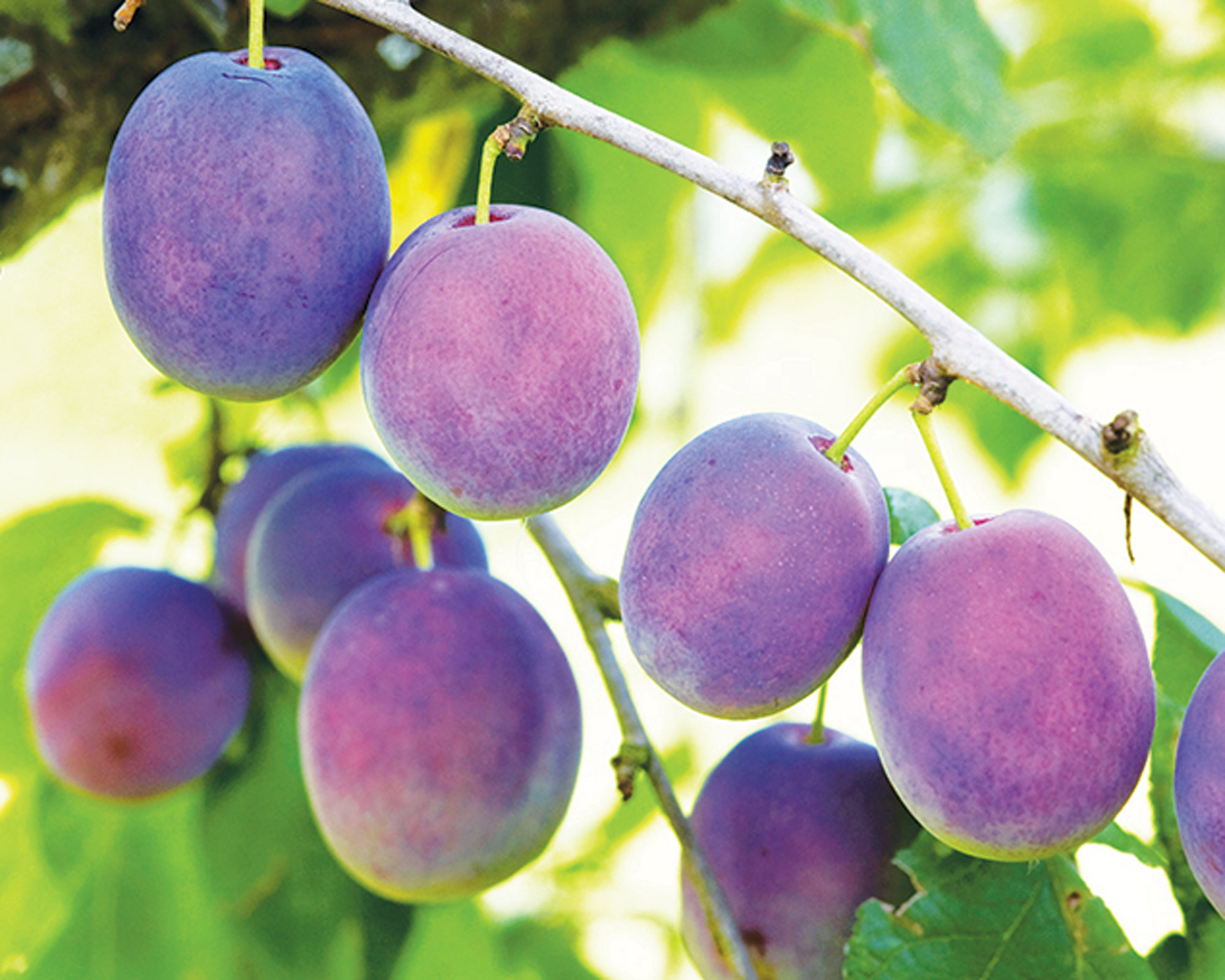

As assistant editor of Amateur Gardening magazine, Janey's gardening passion was fostered from an early age, when her amazing mum had her deadheading hydrangeas, mulching roses, and propagating strawberry plants from runners for school open days. She's also taken part in lots of conservation and rewilding projects for the RHS and TCV as a way of exploring her horticultural horizons.
